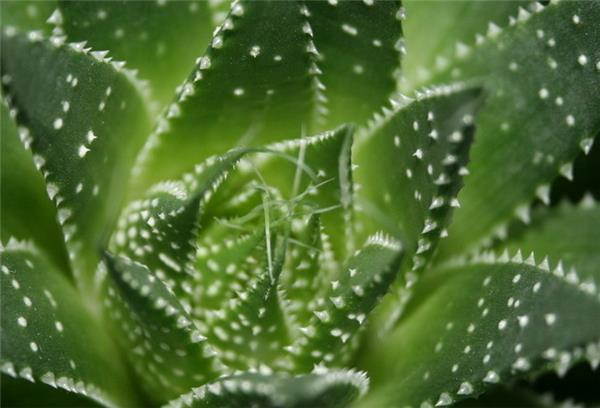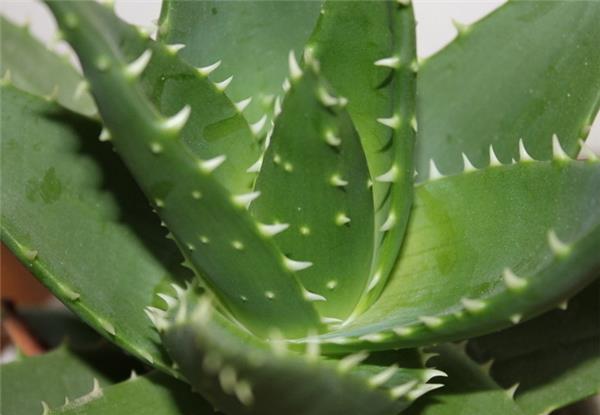[efficacy, function and taboo of aloe] what are the functions of aloe?
Aloe is a kind of plant that we are very familiar with. Many people grow it at home. The plant is chic and lovely, it has a good ornamental and embellishment effect, and the role of purifying the air is also very prominent. Aloe also has a very good effect in many aspects, such as medicine. I have introduced the breeding methods of aloe before, so I would like to share with you the efficacy and function of aloe today:

I. the efficacy and function of aloe.
Sterilization. Aloe tincture (Aloetin). It is a strong antibacterial substance, which can kill fungi, molds, bacteria, viruses and other germs, inhibit and eliminate the development and reproduction of pathogens.
Anti-inflammatory. The combination of bradykinin of aloe and vascular tension can resist inflammation. In particular, the polysaccharides of aloe can enhance the body's resistance to disease.
Cosmetology. Aloe polysaccharides and vitamins have good nutrition, moisturizing and whitening effect on human skin. Especially the most troublesome acne of young girls, aloe has a good effect on eliminating acne.
Detoxify. Aloe can eliminate metabolic waste because it can inhibit excessive immune reaction and enhance the phagocytic function of phagocytes.

2. Taboos on the consumption of aloe
Because aloe emodin produced after aloe decomposes in vivo has a strong stimulating effect on intestinal mucosa, if you take too much aloe at one time, it may cause adverse reactions in the digestive tract, such as nausea and vomiting, abdominal pain, diarrhea and even hematochezia. In severe cases, it may also cause damage to renal function. Aloe can also make female pelvic organs congested, promote uterine movement, pregnant women or women during menstruation easy to cause abdominal pain, increased bleeding and even lead to abortion. In addition, aloe may also cause skin allergic reactions when used externally, such as redness, swelling, itching and pain.
Points for attention in using aloe
1, external use should be noted: if it is used for the first time, it should be tried on a small area of skin first, and then be used in a large area after making sure there is no allergy.
2, when taking aloe vera, we should pay attention to: aloe vera is bitter and cold, so it is not suitable for frail people, children, pregnant women and women during menstruation.

Third, the culture method of aloe.
1. Temperature: aloe vera is very afraid of cold. It usually stops growing at about 5 ℃ and frostbite at 0 ℃. Therefore, the optimum temperature for aloe culture is 15 ℃ 35 min. Like other plants, aloe needs water, but it is most afraid of stagnant water. The humidity of 45% at 85% is most suitable for aloe.
2. Soil: aloe vera needs to be born in places with good drainage performance, so the soil can be mixed with some gravel when planting to prevent soil consolidation, reduce the water permeability of aloe roots and hinder root respiration. Try to use fertilizers containing phosphorus, potassium and some trace elements when planting, and organic fertilizers are more suitable.
3. Lighting: like other plants, aloe needs sunlight to grow. For the newly planted aloe, it is best to let the aloe see the sun in the morning and avoid being exposed to direct sunlight at noon.

Aloe has a strong effect on beauty and skin care, medicine and food. It is a very valuable plant. It can be planted in the middle of the home. It can not only beautify the home environment, but also come in handy in many aspects, such as beauty and skin care.
Related
- Wuhan Hospital Iron Tree Blooming Result Was Instantly Frightened by the Gardener Master
- Which variety of camellia is the most fragrant and best? Which one do you like best?
- What is the small blue coat, the breeding methods and matters needing attention of the succulent plant
- Dormancy time and maintenance management of succulent plants during dormancy
- Minas succulent how to raise, Minas succulent plant pictures
- What are the varieties of winter succulent plants
- How to raise succulent plants in twelve rolls? let's take a look at some experience of breeding twelve rolls.
- Attention should be paid to water control for succulent plants during dormant period (winter and summer)
- Watering experience of twelve rolls of succulent plants
- Techniques for fertilizing succulent plants. An article will let you know how to fertilize succulent plants.



